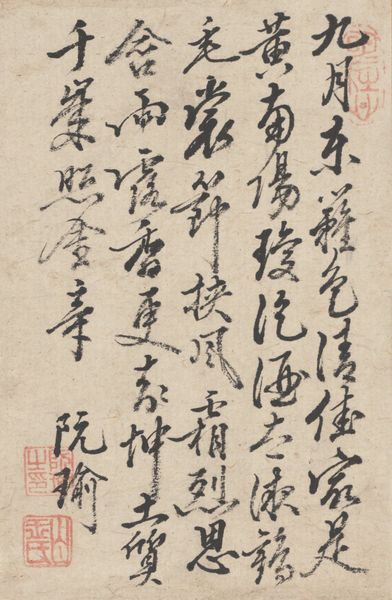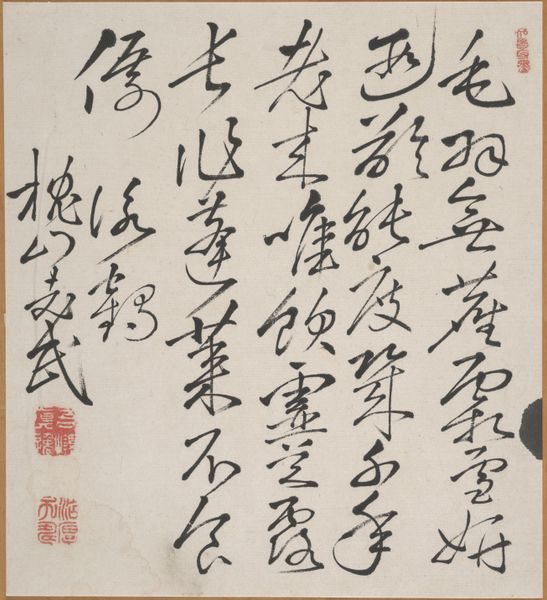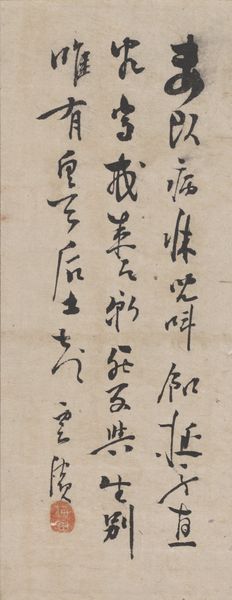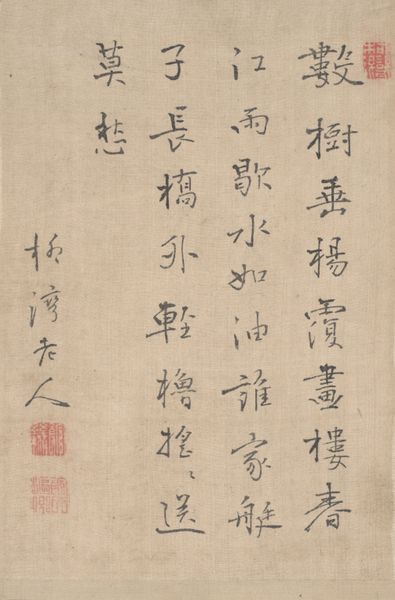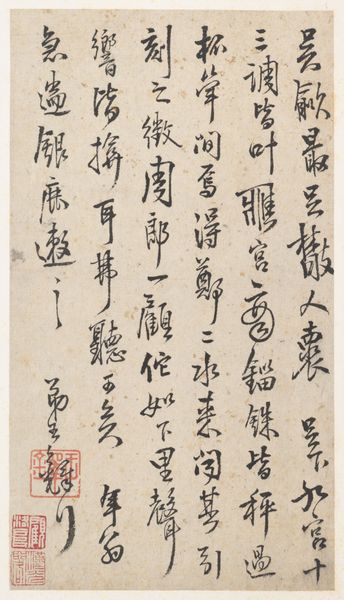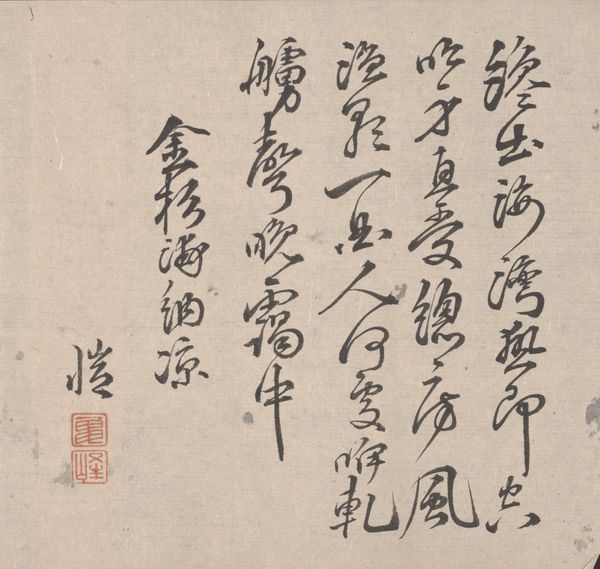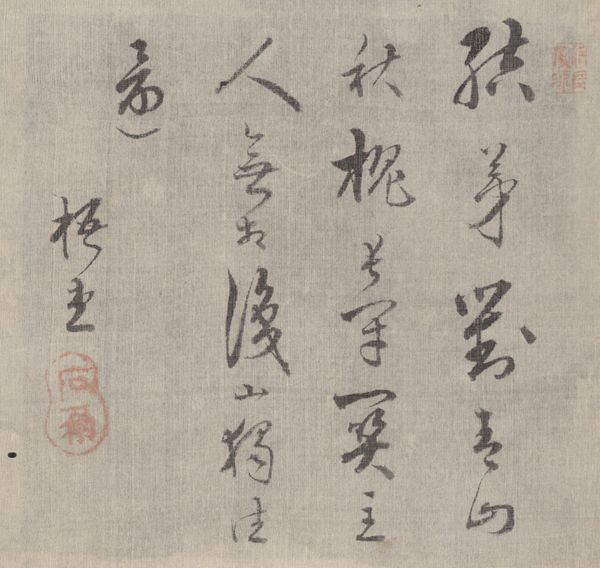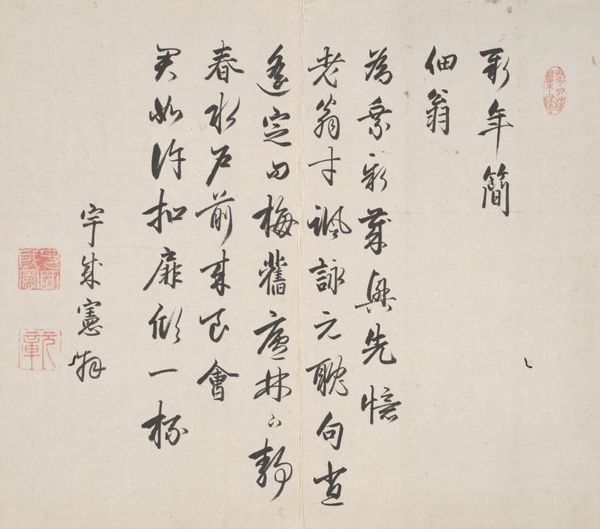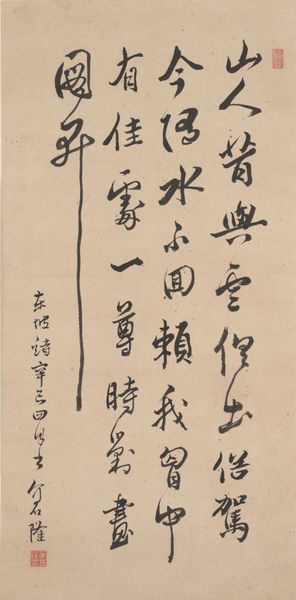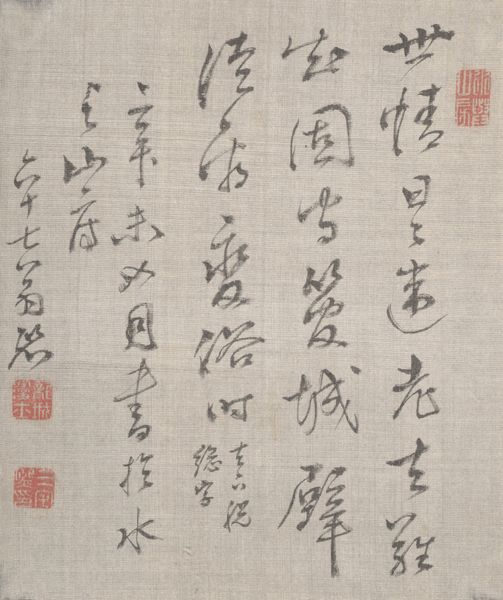
paper, ink-on-paper, ink
#
asian-art
#
paper
#
ink-on-paper
#
ink
#
calligraphy
Dimensions: 43 3/4 × 11 5/16 in. (111.13 × 28.73 cm) (image)68 3/4 × 16 7/16 in. (174.63 × 41.75 cm) (mount, without roller)
Copyright: Public Domain
Editor: Here we have "Temporary Palace at Yoshino," a calligraphy piece from the 19th century by Murase Taiitsu, rendered in ink on paper. The script has such a stark presence, a tactile weight almost. How do you read this work? Curator: Well, consider the materiality. Ink, paper, and brush – these weren't just neutral tools. The production of high-quality ink involved intense labor, and paper in this context represents a specific commodity within a network of trade and consumption. This work becomes interesting when we investigate how the labor of ink and paper making influence its presence. Editor: That's a perspective I hadn’t considered. Does the act of calligraphy, turning material into art, relate to labor, craft, or perhaps commerce of ink and paper? Curator: Exactly! Think about the relationship between the artist, the patrons who would commission or purchase such works, and the unseen laborers who produced the very materials the artist uses. The calligrapher’s training also involves a rigid discipline, an artistic labor that can be examined alongside other forms of making. Does it reinforce social hierarchies? How does the ready availability and production affect its popularity, perhaps influencing a shift towards more modern artmaking practices? Editor: That is fascinating! Looking at the history and means of production behind a piece… It opens up entirely new avenues for interpretation. It redefines what we think of 'artistic expression'. Curator: Precisely! The means by which an object is made becomes inextricably linked to its meaning and social impact. Considering the context of material production, the social and labor history, gives an additional dimension to appreciating ‘artistic expression’.
Comments
minneapolisinstituteofart about 2 years ago
⋮
Angular, thin, and unconventional, the brushwork here may appear unsteady and unskilled, but is in fact Murase’s carefully crafted signature writing style. He was an accomplished poet, calligrapher, and painter, and studied Chinese literature and philosophy. This poem is an example of qiyan jueju poetry, which is a quatrain of seven characters each in length with two pairs of couplets. In this poem, Murase draws upon his knowledge of Chinese history to compose a poem about the collapse of the once-mighty Tang dynasty (618-907 ce) due to Emperor Xuanzong’s obsession with Yang Guifei, his favorite concubine and one of the four great beauties of ancient China. 鳳輦俄如幸蜀山當初誰覺安祿姦京華昏夢南遷醒不庇蒼生庇玉顏The Imperial carriage travels like Emperor Ming [of Tangdynasty]’s flight to the Shu Mountains [modern SichuanProvince];At first, who could have known the wickedness of Anlu'Life in the capital was like a dream waken up by the move tothe south;He had not protected the people, but only the one with thejade face [elegant woman].(Trans. adapted from Stephen Addiss)
Join the conversation
Join millions of artists and users on Artera today and experience the ultimate creative platform.
